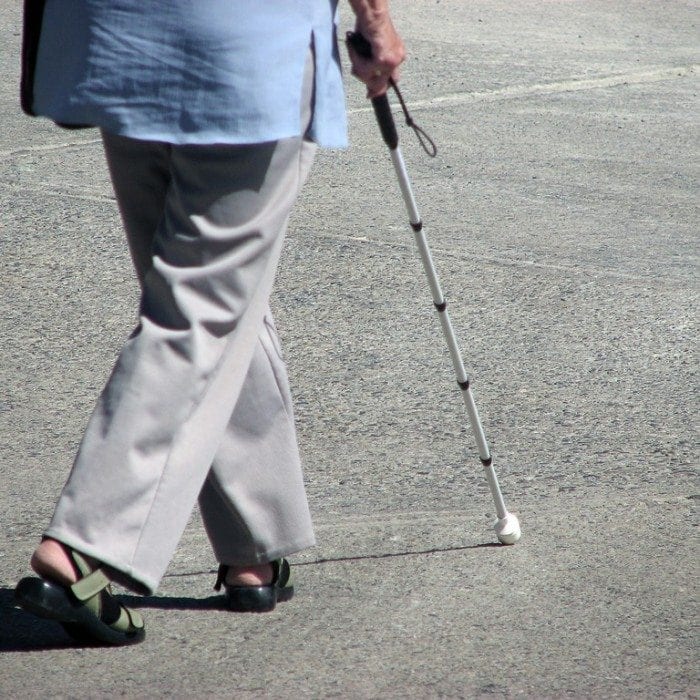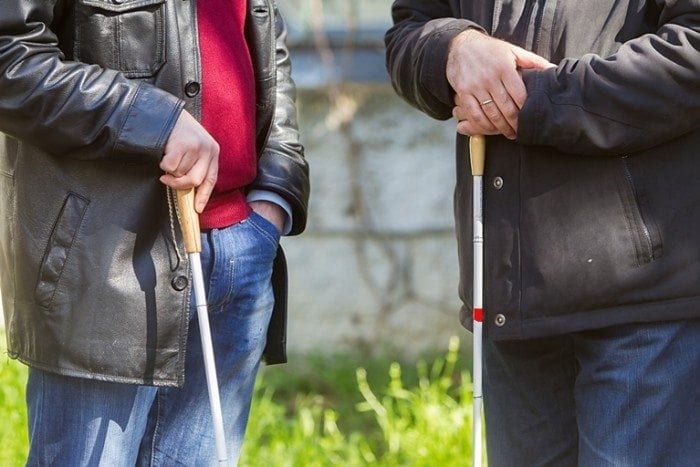Celebrating White Cane Safety Day & Blind Americans Equality Day
Published onEquality Awareness
Equality awareness for people who are blind might sound a little strange. Probably because you’d think all Americans have equality regardless of their abilities. This is often not the case for millions of Americans who are blind.

Barriers that Prevent Equality
People who are blind face both physical barriers and communication barriers. This is the reason for Blind American’s Equality Day. By bringing awareness to the obstacles people with blindness face we get one step closer to equality.
Crowded pathways, broken sidewalks, inadequate braille signage, blocked doorways, straight curbing, and more become hazards for people who are blind. These hazards prevent people who are blind from having equal access to buildings, businesses, and information needed to navigate their surroundings.
Communication Barriers
Did you know there are also communication barriers that prohibit people who are blind from equal access to information? Think about all of the important printed materials you receive, in person and in the mail. There are medical statements, banking, mortgage, investment and insurance documents, utility notices, local information, and more. If you couldn’t see would you be able to manage these items independently?
A person who is blind or has low vision can independently manage their affairs when information is provided in a format they can access, like braille, large print, audio, or in an accessible digital format.
The Past and Present
In 1930, the White Cane Law was created. The law had less to do with equality and more to do with identification. White canes were used to identify a person as having blindness. The intention of the law was to keep blind people safe if they were seen out in the community. Yet, the law did not cover removing barriers or creating funding for teaching cane mobility. Independence and equality were not the intention of the White Cane Laws.
Today, the laws are clear that a white cane is a tool for people who are blind. A person who is blind uses a cane as a way for them to independently navigate their surroundings in the community.
White Cane Laws vary by state, and they are designed to protect people who are blind to promote their independence while using a white cane as a tool.
White Cane Safety Day
Many people urged legislators to make it clear that a White Cane was a tool to provide independence for people who are blind and have low vision. And, to bring awareness of how to interact and treat a person who is blind, especially when they are independently moving about the community.
A resolution was signed into law in 1964, making White Cane Safety Day, October 15th. President Johnson acknowledged that a white cane as a tool for people who are blind.
“White Cane Safety Day” becomes “Blind American’s Equality Day”
On October 15, 2010, President Obama made changes to White Cane Safety Day renaming it, Blind American’s Equality Day. “On Blind American’s Equality Day, we celebrate the achievements of people who are blind and visually impaired…” Read the entire proclamation on WhiteHouse.gov.
President Obama recognized that people who are blind or have low vision need adequate support for equality. While canes gives people who are blind mobility and greater independence, there were still many barriers preventing equality. The changes in the proclamation address the need for a better awareness of the many laws that protect the rights of people who are blind and have low vision.
Action Across the World
The World Blind Union (WBU) is made up of 190 countries and they represent over 253 million blind and partially sighted people, has deemed October 15th as International White Cane Day. The WBU shares that with the right mobility training in using a cane, a person who is blind can access many areas of the world independently, and with confidence.
Take Action for Accessibility
While awareness regarding the need for ADA accessibility is increasing, more needs to be done to bring true equality to Americans who are blind or have low vision. And, you can help! An excellent place to start is inside your organization. Make ADA compliance an easy path for clients and employees to navigate by making aisles wider in your store, providing easy access to braille documents, and much more. This simple step will show the public that your company cares about more than just the bottom line.
Braille Works is a partner for equality of people who are blind. We provide Braille, Audio, Large Print, and Digital Compliance to organizations. Braille Works continues Making the World a More Readable Place™ as we reach 25-years in business.
Updated October 15, 2019
Categorized in: Accessibility, Health and Wellness, Informational, News and Events
This post was written by




Comments are closed here.